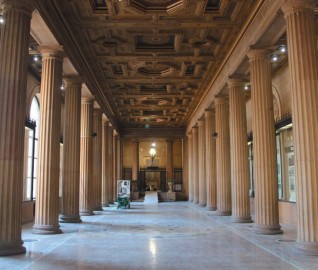
Gypsum plaster is often a character-defining material of historic interior spaces. However, plaster is also vulnerable to loss, and historic finishes can be damaged by water infiltration or inappropriate modifications to building structures or mechanical systems.
In this two-part article, architect engineer Timothy Crowe and architect Kenneth Itle present case studies that examine two different plaster remediation projects that presented technical challenges where performance assessments, mock-ups, laboratory testing, and structural modeling proved valuable to verify the adequacy of the proposed repairs. Part 1 includes corrective measures to interior plaster finishes within the law library of the Nebraska State Capitol.
This article was originally published in the Fall 2016 issue of Licensed Architect magazine, the official publication of the Association of Licensed Architects.
RELATED INFORMATION
-
 Our materials scientists provide comprehensive consulting services for the evaluation and... MORE >Services | Materials Evaluation and Testing
Our materials scientists provide comprehensive consulting services for the evaluation and... MORE >Services | Materials Evaluation and Testing -
 Timothy M. Crowe, Associate PrincipalWJE Northbrook MORE >People | Timothy M. Crowe, Associate Principal
Timothy M. Crowe, Associate PrincipalWJE Northbrook MORE >People | Timothy M. Crowe, Associate Principal -
 Kenneth M. Itle, Associate PrincipalWJE Northbrook MORE >People | Kenneth M. Itle, Associate Principal
Kenneth M. Itle, Associate PrincipalWJE Northbrook MORE >People | Kenneth M. Itle, Associate Principal -
 Case studies examine two different plaster remediation projects (part 2 of 2). MORE >Articles | Assessment and Repair of Historic Plaster Systems (Part 2)
Case studies examine two different plaster remediation projects (part 2 of 2). MORE >Articles | Assessment and Repair of Historic Plaster Systems (Part 2)



































